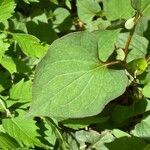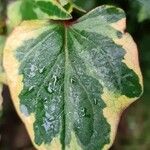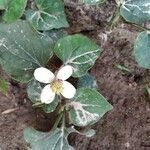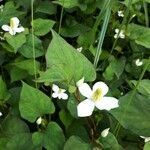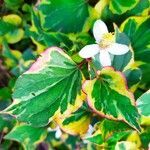| Therapeutic use
|
Abdominal pain (aerial part), Edema (aerial part), Abdominal pain (fruit), Inflammation (fruit), Abdominal pain (leaf), Anti-inflammatory agents (leaf), Appetite stimulants (leaf), Cholera (leaf), Constipation (leaf), Diarrhea (leaf), Digestive system diseases (leaf), Diuretics (leaf), Dysentery (leaf), Dysentery, amebic (leaf), Eye diseases (leaf), Furunculosis (leaf), Gonorrhea (leaf), Hematologic diseases (leaf), Hemorrhage (leaf), Inflammation (leaf), Measles (leaf), Pain (leaf), Pharyngitis (leaf), Sinusitis (leaf), Skin diseases (leaf), Sprains and strains (leaf), Stomach diseases (leaf), Stomach ulcer (leaf), Wounds and injuries (leaf), Dysentery (rhizome), Sprains and strains (rhizome), Stomach ulcer (rhizome), Cholera (root), Diarrhea (root), Diuretics (root), Dysentery (root), Dysentery, amebic (root), Stomach diseases (root), Stomach ulcer (root), Vomiting (root), Abdominal pain (shoot), Dysentery (stem), Stomach diseases (stem), Abscess (unspecified), Alexiteric (unspecified), Anodyne (unspecified), Antidote (unspecified), Antiseptic (unspecified), Anus (unspecified), Aperient (unspecified), Astringent (unspecified), Bactericide (unspecified), Bite(Snake) (unspecified), Bones (unspecified), Cancer(Stomach) (unspecified), Cough (unspecified), Diuretic (unspecified), Dysentery (unspecified), Dyspepsia (unspecified), Enteritis (unspecified), Eye (unspecified), Female (unspecified), Fertility(Veterinary) (unspecified), Fever (unspecified), Gonorrhea (unspecified), Internulcer (unspecified), Lung (unspecified), Malaria (unspecified), Measles (unspecified), Pertussis (unspecified), Pharyngitis (unspecified), Piles (unspecified), Poison (unspecified), Refrigerant (unspecified), Skin (unspecified), Suppurative (unspecified), Swelling (unspecified), Urethritis (unspecified), Urogenital (unspecified), Emmenagogue (unspecified), Laryngitis (unspecified), Chest (unspecified), Prolapse (unspecified), Resolvent (unspecified), Tumor(Lung) (unspecified), Vesicant (unspecified), Gastritis (unspecified), Sore (unspecified), Abdominal pain (unspecified), Acne vulgaris (unspecified), Angiotensin-converting enzyme inhibitors (unspecified), Antihypertensive agents (unspecified), Anti-infective agents (unspecified), Anti-inflammatory agents (unspecified), Antineoplastic agents (unspecified), Antipyretics (unspecified), Antitoxins (unspecified), Appetite stimulants (unspecified), Bites and stings (unspecified), Candidiasis, cutaneous (unspecified), Colic (unspecified), Deodorants (unspecified), Dermatitis, seborrheic (unspecified), Digestive system diseases (unspecified), Diuretics (unspecified), Exanthema (unspecified), Eye diseases (unspecified), Hematologic diseases (unspecified), Hypertension (unspecified), Intestinal diseases (unspecified), Jaundice (unspecified), Liver diseases (unspecified), Lung diseases (unspecified), Menstruation-inducing agents (unspecified), Skin care (unspecified), Skin diseases (unspecified), Snake bites (unspecified), Stomach diseases (unspecified), Tinea pedis (unspecified), Urination disorders (unspecified), Disorder of bone (unspecified), Platelet aggregation inhibitors (unspecified), Cooling effect on body (unspecified), Platelet aggregation inhibitors (whole plant)
|
